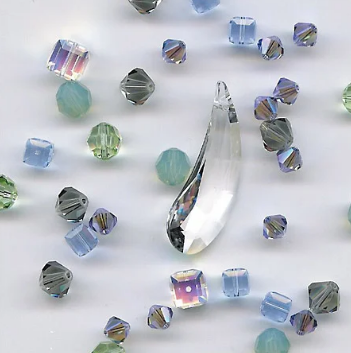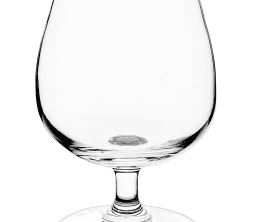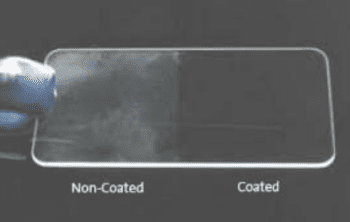Flint glass, also known as lead glass, is a type of high-quality glass that contains a significant amount of lead oxide (PbO) in its composition. The addition of lead oxide imparts unique optical and decorative properties to the glass, making it prized for use in fine glassware, crystal, and decorative objects.

Composition of Flint Glass: The primary component of flint glass is silica (SiO2), just like other types of glass. However, it differs from regular soda-lime glass by containing a substantial percentage of lead oxide (typically between 18% to 40%) along with other additives like potassium oxide (K2O) and soda (sodium oxide, Na2O). The high lead content gives flint glass its characteristic brilliance, high refractive index, and ability to disperse light into its spectral colors (fire).
Properties of Flint Glass: The presence of lead oxide in flint glass results in several key properties:
- Optical Brilliance: Flint glass has exceptional optical properties, including a high refractive index. This property causes light to bend more as it passes through the glass, giving it a brilliant appearance and enhancing the sparkle and clarity of glass objects.
- Dispersion: Flint glass has strong light dispersion properties, meaning it can separate white light into its spectral colors, creating beautiful rainbow-like effects. This dispersion is particularly noticeable when light passes through facets of cut glassware or crystal.
- Weight and Sound: Lead glass is denser and heavier than regular soda-lime glass, giving it a more substantial feel. This characteristic also results in a clear and resonant sound when struck, which contributes to the quality of crystal glassware.
- Malleability: Lead glass has a lower softening point than regular glass, making it easier to work with during glassblowing and glass shaping processes.
Uses of Flint Glass: Due to its unique properties, flint glass is highly sought after for various applications:
- Fine Glassware and Crystal: Flint glass is extensively used to craft high-quality glassware and crystal items, including wine glasses, champagne flutes, decanters, vases, and decorative figurines. The brilliance and sparkle of lead glass make it a popular choice for upscale table settings and formal occasions.
- Optical Lenses and Prisms: The high refractive index and dispersion of flint glass make it suitable for manufacturing high-quality optical lenses, prisms, and other precision optical components used in cameras, binoculars, telescopes, and other optical instruments.
- Chandeliers and Light Fixtures: Lead glass is often used for crafting chandeliers and light fixtures to enhance light dispersion and create stunning visual effects.
- Decorative Art Pieces: The exceptional optical properties of flint glass make it a favored material for creating decorative art pieces and sculptures that play with light and colors.
It is worth noting that while lead glass has desirable optical properties and is highly prized for its aesthetics, the lead content can pose potential health hazards if the glassware comes into contact with food and beverages. Therefore, it is essential to ensure that lead glassware is used for decorative or non-food contact purposes only, and suitable alternatives should be used for food and drink consumption.


